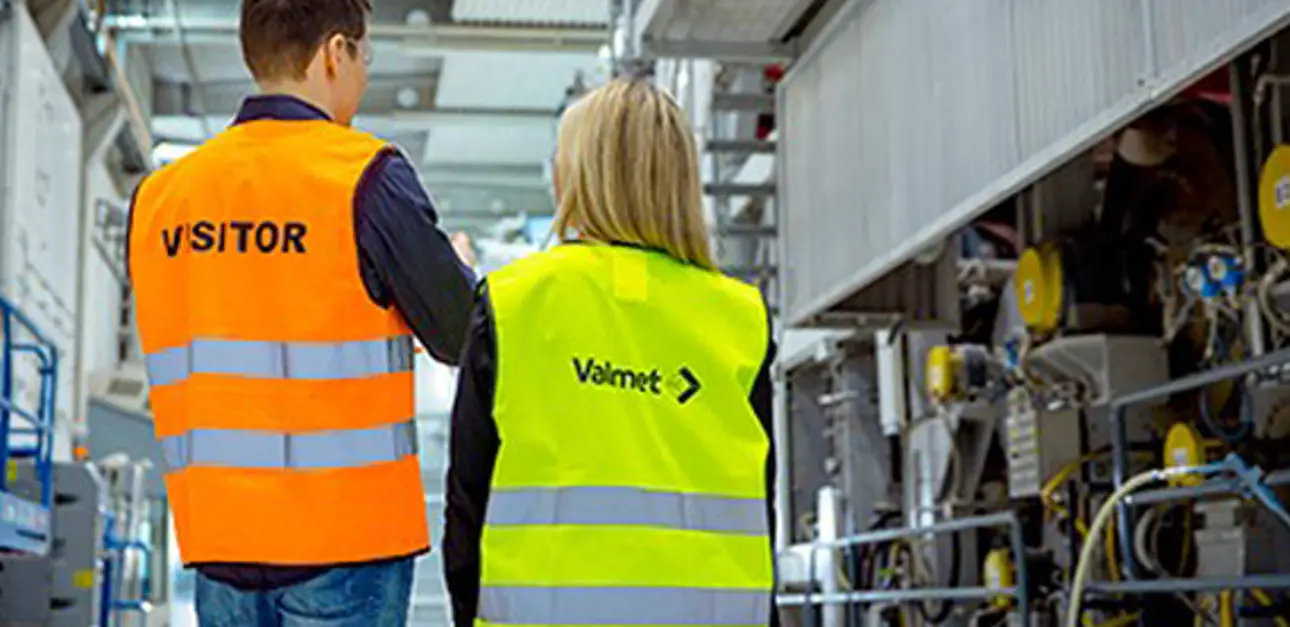Is the client responsible for the responsibility of subcontractors?
Procurement is one of the most important processes of many companies and, consequently, the keys for implementing responsibility can be found in companies’ supply chains. Who is responsible for the responsibility of the supply chain?

Procurement plays a very important role in many companies; often, procurement costs are as much as 60–70% of the company’s turnover. When discussing corporate responsibility in procurement, the responsibility of the buying company covers the entire supply chain. Even though competition is harsh between suppliers on the international market and companies want more for less, companies have the responsibility for developing and ensuring responsibility throughout the chain.
The supply chains are global, long and multi-stage, creating additional challenges for the management of responsibility and risks. For instance, Valmet has more than 10,000 active suppliers in more than 50 countries. With global chains, any impact also extends across the globe, and in addition to cost efficiency, buying companies are interested in the suppliers’ attitude to employee safety, wages and working times, the realization of human rights, environmental impact, compliance with regulations and anti-corruption activities. The operations and performance of subcontractors affect the success and reputation of the buying company either positively or negatively, but the impact of responsibility requirements can also be seen in local communities. For instance, Valmet’s long-term occupational safety training for suppliers in China has yielded clear results: work-related accidents have decreased and employees’ job satisfaction increased.
Towards industry-specific cooperation
Most companies audit their suppliers in the field of responsibility. However, auditing in itself does not guarantee that problems do not exist, as the audit result reflects the situation at the time of the audit. Problems found in audits must be corrected and the implementation followed up. Follow-up is often the stumbling block in audit activities and may be left incomplete. If follow-up is not completed, the supplier may be left with a wrong impression of the severity of the problem.
At Valmet, audit procedures related to responsibility are a fixed and automatic part of the supplier evaluation process. We have global, harmonized procedures for carrying out the audits. Last year, together with a third party, we audited 54 suppliers. Valmet requires that all defects found during the audits are corrected and supports the suppliers in the implementation of the corrections. You can read more about Valmet’s sustainable supply chain here.
A lot of good things result from the audits: increased competitiveness (an excellent example of the development of one Valmet supplier can be read here), a better understanding of the operations’ social and environmental impact, and improved risk management, resource utilization and customer satisfaction. All these factors have a financial impact on companies’ operations.
Companies use millions of euros on audits on the global scale, and so there is good reason to ask whether the benefits obtained from them are in proportion to the costs. How much are owners and customers prepared to pay for the good management of companies’ supply chains?
One company cannot make the world better or the supply chain responsible. Cooperation within the industry is required: a common vision and responsibility. There are good examples of this in the food and clothing industries. We need similar cooperation in the technological manufacturing industry as well.
Cooperation within the industry can be used to save costs and make processes more efficient, as dozens of companies do not implement separate audits, but the audit is performed once on the supplier and the results are shared within the industry. In addition, common objectives and standards could decrease the burden of individual companies, as well as the costs. However, competition legislation and information security must be considered when sharing information.
Active and risk-oriented work takes companies forward and opens possibilities
Long supply chains inevitably include gray areas for every company; nobody can thoroughly know the entire chain. Active and risk-oriented supply chain management means recognizing the main risks with potential impact on the business, focusing on the supplier segment with the highest risk and developing operating methods for actively decreasing the risks together with the suppliers.
The focus in the management of responsible procurement shall be on preventive, not corrective actions, and on positive implementation. The most important thing in managing responsibility in the supply chain is to include it in the daily processes. Having the support of the top management is equally important.
In addition to the risks perspective of supply chain responsibility, the opportunities for cooperation created by responsibility requirements should also be considered, for instance, in product development together with suppliers. At Valmet, we have developed the OptiConcept M paper making concept in cooperation with selected suppliers. Customers, suppliers and Valmet have all benefited from the efficiency increases and cost savings achieved.
The results speak for themselves: The OptiConcept M technology uses 30% less energy and clean water. Safety is improved as there are less stairs and maintenance is easier. The equipment also takes 40% less space in the hall due to the compact design.
So, is the client responsible for the responsibility of subcontractors? Yes – both the subcontractor and the client are responsible. The client must require responsible operating methods and support their implementation, as each procurement decision makes a difference. Only close and transparent cooperation with subcontractors leads to the realization of joint objectives and a situation beneficial to all parties.
| Laura Puustjärvi Head of Sustainability |
 |